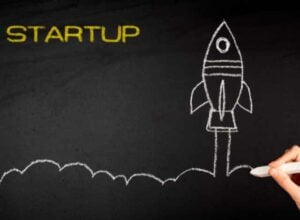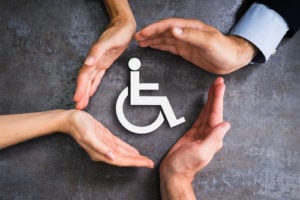In today’s fast-paced business environment, understanding the logistics and distribution process is crucial for any company aiming to maintain a competitive edge. Logistics encompasses the planning, execution, and management of the flow of goods, services, and information from the point of origin to the final customer. This process includes various components such as transportation, warehousing, inventory management, order fulfillment, and customer service.
By gaining a comprehensive understanding of these elements, businesses can identify inefficiencies and areas for improvement that can lead to cost savings and enhanced customer satisfaction. To effectively analyze the current logistics and distribution process, companies should map out their entire supply chain. This involves documenting each step from procurement to delivery, including the roles of suppliers, manufacturers, distributors, and retailers.
By visualizing the flow of goods and information, businesses can pinpoint bottlenecks or redundancies that may be hindering performance. For instance, a company may discover that its reliance on multiple suppliers for the same product leads to increased lead times and higher costs. Understanding these dynamics is the first step toward optimizing logistics and distribution strategies.
Identifying areas for improvement and optimization
Analyzing Key Performance Indicators
By benchmarking these metrics against industry standards or competitors, businesses can gain valuable insights into their current standing and where they need to focus their efforts. This analysis can help companies pinpoint specific areas that require improvement, such as inefficient warehouse layouts or outdated technology.
Streamlining Operations
For instance, a retail company may find that its order fulfillment process is taking longer than average due to inefficient warehouse layout or outdated technology. By conducting a thorough analysis of their operations, they might identify that implementing a more streamlined picking system or investing in warehouse management software could significantly reduce processing times.
Engaging Employees in the Evaluation Process
Additionally, engaging employees in this evaluation process can yield valuable insights, as frontline workers often have firsthand knowledge of operational challenges that may not be apparent to management. This collaborative approach can help companies develop targeted solutions that address specific pain points and improve overall logistics and distribution efficiency.
Researching and analyzing potential proposals for enhancement
With areas for improvement identified, businesses should conduct thorough research to explore potential proposals for enhancement. This involves looking into best practices within the industry, technological advancements, and innovative solutions that have been successfully implemented by other organizations. Companies can benefit from attending industry conferences, participating in webinars, or networking with peers to gather insights on emerging trends and successful strategies.
For instance, a logistics company might explore the use of automation technologies such as robotics in their warehouses. By analyzing case studies from other companies that have adopted similar technologies, they can assess the potential return on investment and operational benefits. Additionally, researching software solutions for route optimization can help reduce transportation costs and improve delivery times.
By compiling a list of viable proposals based on thorough research, businesses can create a solid foundation for their comprehensive improvement plan.
Developing a comprehensive proposal for logistics and distribution improvement
After gathering insights from research and analysis, the next step is to develop a comprehensive proposal for logistics and distribution improvement. This proposal should clearly outline the identified issues, proposed solutions, expected outcomes, and a detailed implementation plan. It is essential to present data-driven justifications for each recommendation to demonstrate the potential impact on efficiency and cost savings.
For example, if a company proposes investing in a new inventory management system, the proposal should include an analysis of current inventory turnover rates compared to industry benchmarks. It should also project how the new system could improve accuracy and reduce excess stock levels over time. Additionally, including timelines for implementation and key milestones will help stakeholders understand the scope of the project and what to expect throughout the process.
A well-structured proposal not only serves as a roadmap for improvement but also builds credibility with decision-makers.
Presenting the proposal to key stakeholders and decision-makers
Once the proposal is developed, it is time to present it to key stakeholders and decision-makers within the organization. This presentation should be tailored to address the specific interests and concerns of each audience member. For instance, financial stakeholders may be particularly interested in cost-benefit analyses and projected ROI, while operational leaders may focus on how proposed changes will enhance efficiency.
Using visual aids such as charts, graphs, and infographics can help convey complex information in an easily digestible format. Engaging storytelling techniques can also make the presentation more compelling by illustrating real-world scenarios that highlight the need for change. For example, sharing a case study of a competitor who successfully implemented similar improvements can serve as a powerful motivator for stakeholders to support the proposal.
Encouraging questions and feedback during the presentation fosters an open dialogue that can lead to valuable insights and refinements to the proposal.
Implementing the approved proposal and monitoring its effectiveness
Once stakeholders have approved the proposal, it is time to move into the implementation phase. This stage requires careful planning and coordination among various departments to ensure that all aspects of the proposal are executed effectively. Assigning clear roles and responsibilities will help streamline the process and keep everyone accountable.
Monitoring effectiveness during implementation is crucial for identifying any challenges that may arise. Establishing KPIs aligned with the goals of the proposal will allow businesses to track progress in real-time. For instance, if a company has implemented a new transportation management system, it should monitor metrics such as on-time delivery rates and transportation costs closely.
Regular check-ins with team members involved in the implementation can provide valuable feedback on what is working well and what may need adjustment.
Evaluating the impact of the proposal on logistics and distribution
After implementation is complete, it is essential to evaluate the impact of the proposal on logistics and distribution processes. This evaluation should involve comparing pre-implementation KPIs with post-implementation results to assess whether the proposed changes have achieved their intended outcomes. Gathering qualitative feedback from employees involved in logistics operations can also provide insights into how changes have affected day-to-day activities.
For example, if a company introduced new software for inventory management, it should analyze whether order accuracy has improved and if stock levels are more aligned with demand forecasts. Additionally, customer feedback regarding delivery times and service quality can offer valuable perspectives on how changes have influenced overall customer satisfaction. A thorough evaluation not only highlights successes but also uncovers areas that may require further refinement.
Making adjustments and improvements based on feedback and results
The final step in enhancing logistics and distribution processes is making adjustments based on feedback and results from the evaluation phase. Continuous improvement should be an ongoing goal for any organization; therefore, businesses must remain agile in adapting their strategies as needed. This may involve revisiting certain aspects of the proposal or exploring new technologies that have emerged since implementation.
For instance, if feedback indicates that employees are struggling with a new system’s user interface, providing additional training or considering alternative solutions may be necessary. Similarly, if customer satisfaction scores reveal ongoing issues with delivery times despite improvements made, further analysis may be required to identify underlying causes. By fostering a culture of continuous improvement and being open to change based on data-driven insights, companies can ensure their logistics and distribution processes remain efficient and effective in meeting evolving market demands.
In conclusion, enhancing logistics and distribution processes requires a systematic approach that begins with understanding current operations and identifying areas for improvement. Through thorough research, comprehensive proposals, effective presentations to stakeholders, diligent implementation monitoring, impact evaluation, and ongoing adjustments based on feedback, businesses can achieve significant improvements in their logistics operations. By embracing this cycle of continuous improvement, companies can not only enhance their efficiency but also deliver greater value to their customers in an increasingly competitive landscape.























